Buy Now UK 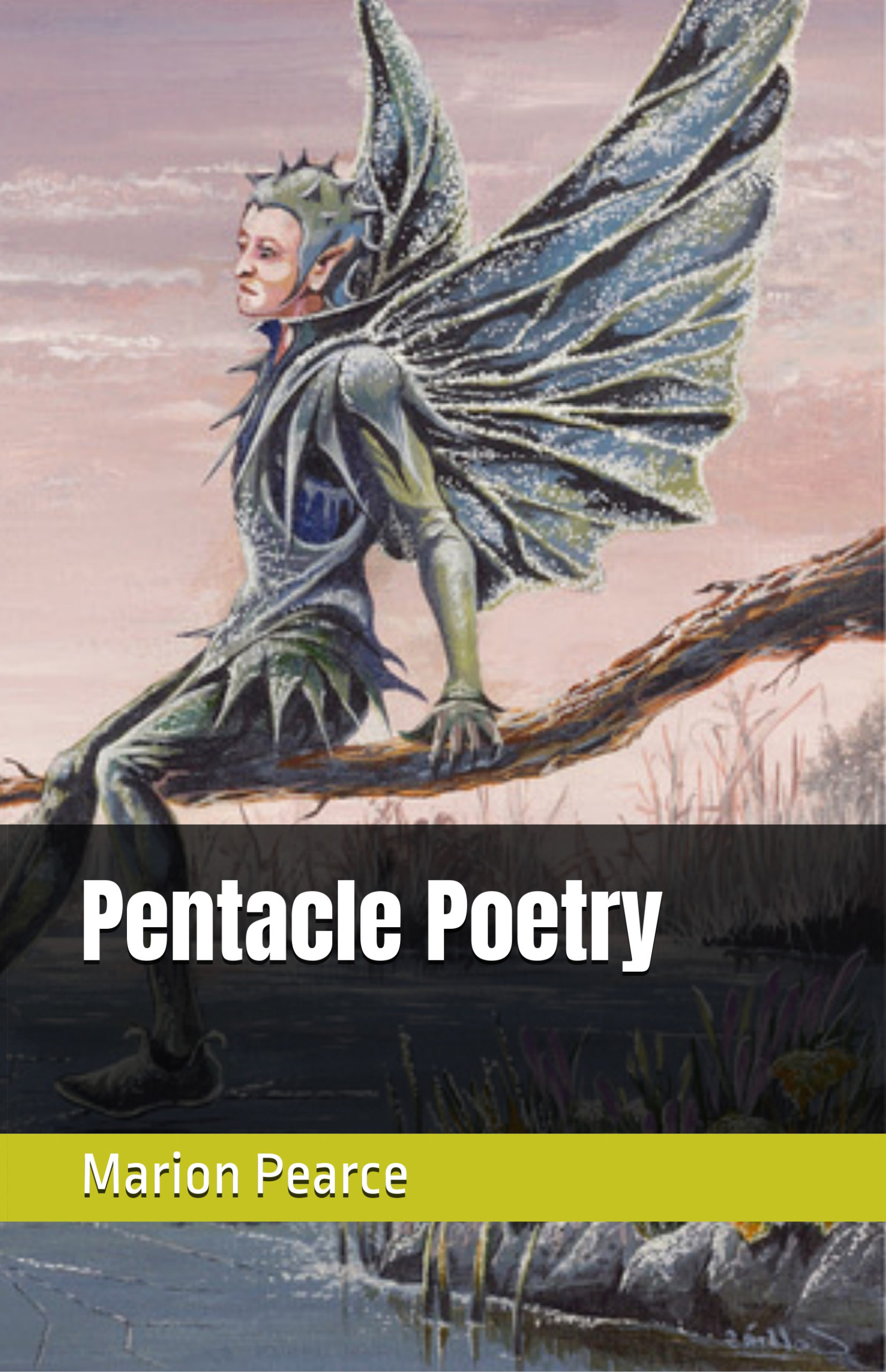
Category Archives: Paganism
Pagan Heart of the West V
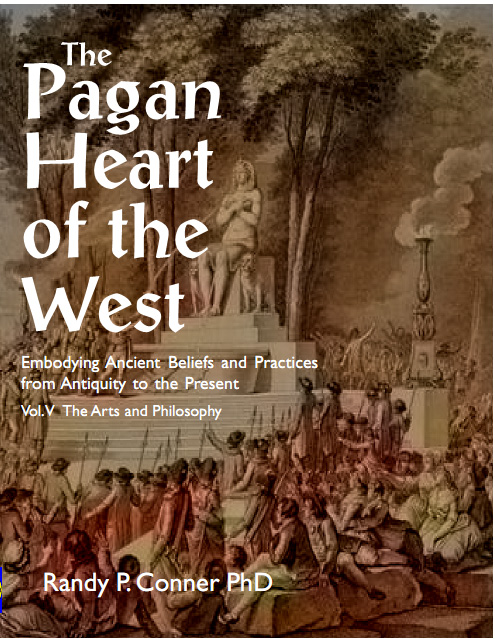
The Pagan Heart of the West:
Embodying Ancient Beliefs and Practices
from Antiquity to the Present
Vol. V The Arts and Philosophy
Randy P. Conner PhD
ISBN 9781906958909
£20.00+p&p /$28.00+p&p
Click HERE for UK edition
Click HERE for USA & Elsewhere
Get Pagan Heart of The West Quartet for only £65.00 postage free / UK
Get Pagan Heart of The West Quartet for only $100.00 postage free / USA (Elsewhere check fd)
In this fifth and final volume, we consider the persistence and transformation of pagan traditions in philosophy and the arts. This final volume also includes the extensive bibliography for the series.
The Pagan Heart of the West challenges current academic notions that paganism died when Christianization occurred; that the transition from paganism to Christianity was a fairly easy, nonviolent one; that persons once pagan were happy to accept the new religion because it fulfilled them or because they viewed it as superior – as if the Inquisition never happened; and that all things pagan are Christian before the mid-twentieth century, even though they demonstrate little or no connection to the Christian New Testament. Likewise, Pagan Heart challenges narrow conceptions of “the West.”
Applying Indigenous and decolonial theories, together with Michel Foucault’s conception of subjugated knowledge, Pagan Heart suggests that instead, paganism should be explored as an ancient and indigenous set of common beliefs and practices, at once ubiquitous and local, that includes the reverence of deities; the veneration of nature; rites celebrating the seasons and the life cycle; practices of healing, divination, and magic, often guided by ritual specialists; and arts and philosophies giving expression to pagan figures, concepts, and narratives.
Pagan Heart focuses on the utilization of theories that contest absolutist language supporting the so-called death of paganism; and on the worship and veneration of ancient deities and kindred beings. Like the other volumes, this volume demonstrates that paganism has not only persisted throughout millennia but that it has also undergone metamorphosis and innovation.
Most importantly, Pagan Heart emphasizes that the ancient gods did not die when Christian authorities forbade their worship and sought, in N. Scott Momaday’s terms, to commit deicide, but instead that they continue to exist and thrive.
Randy P. Conner, Ph.D., is the author of several works on the intersection of gender, sexuality, mythology, and the sacred. He teaches Humanities, including World Mythology, in the Chicago area.
Pagan Heart of the West III & IV
The Pagan Heart of the West
Volume III “Rituals and Ritual Specialists”
& Volume IV “Christianisation” (two volumes bound together)
Randy P. Conner PhD
ISBN-13: 978- 1906958893
£20.00+p&p / US$28.00+p&p
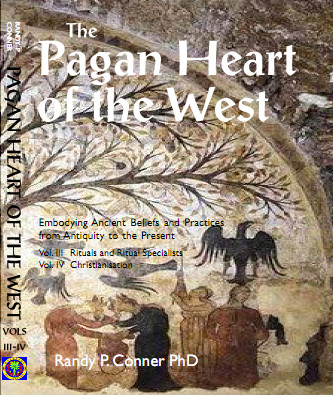
Click Here for UK edition
Click Here for USA & Elsewhere
Get Pagan Heart of The West Quartet for only £65.00 postage free / UK
Get Pagan Heart of The West Quartet for only $93.00 postage free / USA (elsewhere by wfd)
In these third and fourth volumes, Pagan Heart focuses on ritual specialists, including shamans and witches, and on the campaign of Christianization.
The Pagan Heart of the West challenges current academic notions that paganism died when Christianization occurred; that the transition from paganism to Christianity was a fairly easy, nonviolent one; that persons once pagan were happy to accept the new religion because it fulfilled them or because they viewed it as superior – as if the Inquisition never happened; and that all things pagan are in fact Christian prior to the mid-twentieth century, even though they demonstrate little or no connection to the Christian New Testament. Likewise, Pagan Heart challenges narrow conceptions of “the West.”
Applying Indigenous and decolonial theories, together with Michel Foucault’s conception of subjugated knowledge, Pagan Heart suggests that instead, paganism should be explored as an ancient and indigenous set of common beliefs and practices, at once ubiquitous and local, that includes the reverence of deities; the veneration of nature; rites celebrating the seasons and the life cycle; practices of healing, divination, and magic, often guided by ritual specialists; and arts and philosophies giving expression to pagan figures, concepts, and narratives.
In this first of five volumes, Pagan Heart focuses on the utilization of theories that contest absolutist language supporting the so-called death of paganism; and on the worship and veneration of ancient deities and kindred beings. Like the other volumes, this volume demonstrates that paganism has not only persisted over the course of millennia but that it has also undergone metamorphosis and innovation.
Most importantly, Pagan Heart emphasizes that the ancient gods did not die when Christian authorities forbade their worship and sought, in N. Scott Momaday’s terms, to commit deicide, but instead that they continue to exist and thrive.
Randy P. Conner, Ph.D., is the author of several works on the intersection of gender, sexuality, mythology, and the sacred. He teaches Humanities, including World Mythology, in the Chicago area.
Pagan Heart of the West II
The Pagan Heart of the West
Volume II “Nature and Rites”
Randy P. Conner PhD ISBN: 978-1906958886
£20.00+p&p / US$28.00+p&p
Kindle edition $9.99 / £ 7.17
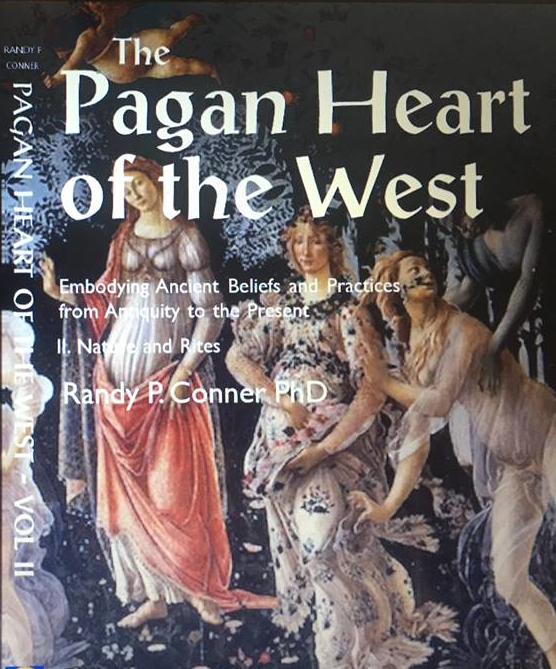
Click HERE for UK edition
Click Here for USA & Elsewhere
Click Here for the USA KINDLE edition
Click Here for the UK KINDLE edition
Get Pagan Heart of The West Quartet for only £65.00 postage free / UK
Get Pagan Heart of The West Quartet for only $93.00 postage free / USA
In this second volume, Pagan Heart focuses on the veneration of nature — flora, fauna, elements, celestial bodies — and on rituals of the seasons, life cycle, healing, divination, and magic.
The Pagan Heart of the West challenges current academic notions that paganism died when Christianization occurred; that the transition from paganism to Christianity was a fairly easy, nonviolent one; that persons once pagan were happy to accept the new religion because it fulfilled them or because they viewed it as superior – as if the Inquisition never happened; and that all things pagan are in fact Christian prior to the mid-twentieth century, even though they demonstrate little or no connection to the Christian New Testament. Likewise, Pagan Heart challenges narrow conceptions of “the West.”
Applying Indigenous and decolonial theories, together with Michel Foucault’s conception of subjugated knowledge, Pagan Heart suggests that instead, paganism should be explored as an ancient and indigenous set of common beliefs and practices, at once ubiquitous and local, that includes the reverence of deities; the veneration of nature; rites celebrating the seasons and the life cycle; practices of healing, divination, and magic, often guided by ritual specialists; and arts and philosophies giving expression to pagan figures, concepts, and narratives.
In this first of five volumes, Pagan Heart focuses on the utilization of theories that contest absolutist language supporting the so-called death of paganism; and on the worship and veneration of ancient deities and kindred beings. Like the other volumes, this volume demonstrates that paganism has not only persisted over the course of millennia but that it has also undergone metamorphosis and innovation.
Most importantly, Pagan Heart emphasizes that the ancient gods did not die when Christian authorities forbade their worship and sought, in N. Scott Momaday’s terms, to commit deicide, but instead that they continue to exist and thrive.
Randy P. Conner, PhD, is the author of several works on the intersection of gender, sexuality, mythology, and the sacred. He teaches Humanities, including World Mythology, in the Chicago area.
Pagan Heart of the West
Featured
Vol. I
Randy P. Conner PhD
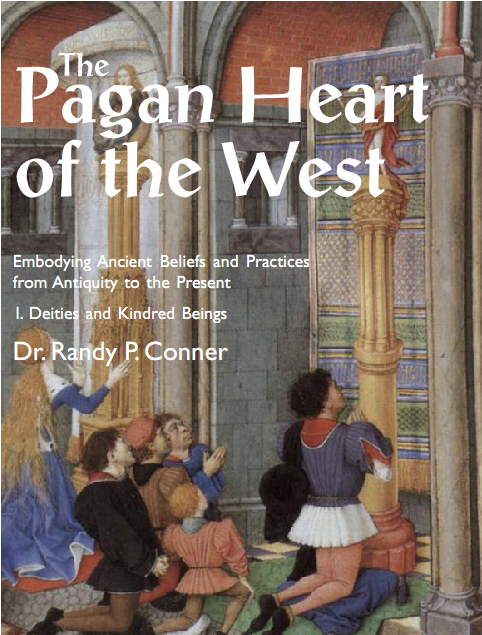
The Pagan Heart of the West challenges current academic notions that paganism died when Christianization occurred; that the transition from paganism to Christianity was a fairly easy, nonviolent one; that persons once pagan were happy to accept the new religion because it fulfilled them or because they viewed it as superior – as if the Inquisition never happened; and that all things pagan are in fact Christian prior to the mid-twentieth century, even though they demonstrate little or no connection to the Christian New Testament. Likewise, Pagan Heart challenges narrow conceptions of “the West.”
The Pagan Heart of the West:
Embodying Ancient Beliefs and Practices from Antiquity to the Present
Volume I “Deities and Kindred Beings”
Randy P. Conner PhD
ISBN-13: 978-1906958879
£20.00+p&p / US$28.00+p&p
Orders over £50 ($75) get free shipping
Click here to Buy UK edition
Click here to Buy USA & Elsewhere
Click HERE to buy the Pagan Heart of the West Quartet / £65 post free UK
Click HERE to buy the Pagan Heart of the West Quartet / $93.00 post free USA
Applying Indigenous and decolonial theories, together with Michel Foucault’s conception of subjugated knowledge, Pagan Heart suggests that instead, paganism should be explored as an ancient and indigenous set of common beliefs and practices, at once ubiquitous and local, that includes the reverence of deities; the veneration of nature; rites celebrating the seasons and the life cycle; practices of healing, divination, and magic, often guided by ritual specialists; and arts and philosophies giving expression to pagan figures, concepts, and narratives.
In this first of five volumes, Pagan Heart focuses on the utilization of theories that contest absolutist language supporting the so-called death of paganism; and on the worship and veneration of ancient deities and kindred beings. Like the other volumes, this volume demonstrates that paganism has not only persisted over the course of millennia but that it has also undergone metamorphosis and innovation.
Most importantly, Pagan Heart emphasizes that the ancient gods did not die when Christian authorities forbade their worship and sought, in N. Scott Momaday’s terms, to commit deicide, but instead that they continue to exist and thrive.
Randy P. Conner, Ph.D., is the author of several works on the intersection of gender, sexuality, mythology, and the sacred. He teaches Humanities, including World Mythology, in the Chicago area.
cover: Barthelemy d’Eyck, Emilie, Arcitas, and Palamon Praying to Their Respective Gods (c. 1465), illumination from Boccaccio’s Il Teseida Delle Nozze d’Emilia.
In this first of five volumes, Pagan Heart focuses on the utilization of theories that contest absolutist language supporting the so-called death of paganism; and on the worship and veneration of ancient deities and kindred beings. Like the other volumes, this volume demonstrates that paganism has not only persisted over the course of millennia but that it has also undergone metamorphosis and innovation.
PantheaCon 2020
Stop Press!!
Dr Randy P. Conner, author of The Pagan Heart of the West will be speaking at
The Final PantheaCon
Friday, February 14 – Monday, February 17, 2020
at San Jose Doubletree Hotel,
2050, Gateway Place,
San Jose, CA, USA.
For full details, speakers program and to book go to their website pantheacon.com/wordpress/
Email: info@pantheacon.com
Pan’s Daughter
Featured
The Magical World of Rosaleen Norton
Revised and Greatly Expanded Edition
Nevill Drury

Pan’s Daughter
The Magical World of Rosaleen Norton
(Revised & Greatly Expanded Edition)
Nevill Drury
Format: Softcover/326 pp/48 illustrations.
ISBN: 978-1-906958-41-1
£22.99/US$32/AUD$36(+$8p&p)
Click Here for Pan’s Daughter / USA
Click Here for Pan’s Daughter / UK
Click Here for Pan’s Daughter / AU
During the 1950s and early 1960s the Sydney-based trance-artist and Pan-worshipper, Rosaleen Norton, was well known in Australia as ‘the Witch of Kings Cross’ and was frequently portrayed in the tabloid press as an evil ‘devil-worshipping’ figure from the red-light district. Norton attracted attention from both the public at large and also the local police for engaging in bizarre pagan sex-rituals with her lover, the poet Gavin Greenlees. Details of these activities would surface from time to time in the local courts when Norton was defending her metaphysical beliefs and seeking to defuse claims that her magical paintings and drawings were obscene. Norton was also associated with the scandal that eventually engulfed the professional career of renowned musical conductor, Sir Eugene Goossens who had arrived in Australia in 1947 and became a member of Norton’s magical coven six years later.
Norton dedicated her magical practice to the Great God Pan and to a lesser extent Hecate, Lilith and Lucifer. She was also intrigued by the visionary potential of Kundalini yoga, out-of-the-body trance exploration and Aleister Crowley’s Thelemic sex magick and combined all of these elements in her ritual activities.
Pan’s Daughter is the only biography of Rosaleen Norton and provides the most detailed and authoritative account of her magical beliefs and practices. First published in Britain by Mandrake in 1993, it is now reissued in a revised and expanded edition.
“Brilliantly researched…outrageous and inspiring”
Fiona Horne, author of Witch – A Personal Journey and Witch – A Magickal Year
“A fascinating study. Drury’s understanding of the occult and spiritual realms makes Norton’s art and life comprehensible” Tom Thompson, Sydney Morning Herald
Dr Nevill Drury (1 October 1947 – 15 October 2013) is best known for his publications on modern Western magic, shamanism and visionary art. For many years he worked in the Australian book industry as an editor and art book publisher and in 2008 he received his Ph.D from the University of Newcastle for a dissertation on the art and magical belifes of Rosaleen Norton.
Arcane Veil
Featured
Ten Discourses on The Craft and The History of Magic
Shani Oates
The Dionysian Spirit
Featured
Sean Fitton
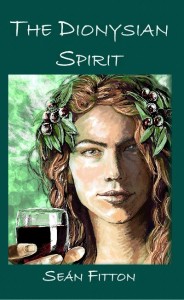
The Dionysian Spirit
Sean Fitton
Format: Softcover
ISBN: 978-1-906958-65-7
£15.00 / US$24.00
Subjects: Ancient Greece/
Greek Mysteries/Myths/Magic/Paganism/Spirituality.
Click Here for The Dionysian Spirit / USA
Click here for Kindle UK edition
Click Here for The Dionysian Spirit / UK
Click here for the Kindle USA edition
Dionysos is an obscure Greek god of wine and theatre for many people. For others, he is so much more.
The Dionysian Spirit examines the essence of what Dionysos is all about, both as a deity and as a cultural and social force. It looks at the relation of Dionysos with his opposite number Apollo. The twin gifts of Apollo and Dionysos are ekstasis (ecstasy) and entheos (enthusiasm) and have informed and enlivened our lives and cultures from ancient times right to the present day and beyond.
The Dionysian Spirit – like the art of a good party – has always been with us and now, in many ways, we need it more than ever.
Contents: Devotional to Dionysos / The Visualisation / The Myths of Dionysos / Dionysian Heroes / Dionysos Around the World / Dionysos Across The Millenium / Dionysos Goes Forth
Cauldron of The Gods
A Manual of Celtic Magick
Jan Fries

Cauldron of The Gods
A Manual of Celtic Magick
Jan Fries
Format:Softcover
ISBN:
£24.99/US$40 (including post and packaging.)
Subjects: Celtic Magick/Druidism.
–
‘If you have only one book on the Celtic past and present, this has to be the one’- The Pentacle
‘Imagine the forest. As darkness falls, the somber beeches disappear in misty twilight and shadows seem to gather under their branches. Far away, the blackbird’s call tells of the coming of the night. The birds cease their singing, silence descends, soon the beasts of the night will make their appearance. Between tangled roots, hidden by nettles and brambles, the earth seems to ripple. A few humps of earth seem to emerge from the ground. They are the last traces of burial mounds, of mounds, which were tall and high 2500 years ago. Many of them have disappeared, hidden by tangled roots of beech and oak, ploughed flat by careless farmers, others again show caved-in tops where grave robbers have looted the central chamber. The locals shun these hills. There are tales that strange fires can be seen glowing on the mounds, and that on spooky nights, great armed warriors arise from their resting places. Then the doors to the deep are thrown open and unwary travelers have to beware of being invited into the halls of the dead and unborn. Here the kings of the deep feast and celebrate, time passes differently and strange treasures may be found. Who knows the nights when the gates are open? Who carries the primrose, the wish-flower, the strange blossom that opens the doors to the hollow hills?’
‘Highly Recommended’ – The Cauldron
Buy USA Edition (& Rest of world)
From Pagan Dawn:
Anything by Jan Fries is these days immediately snapped up by most chaos magicians out there, and this one should be no exception. Fries is an expert in his field and his work is always widely explored and well presented. Occasionally, I find his writing style a little patronising towards those fluffy-bunny Pagans amongst us, but come on, we all have to start somewhere. As such, 1 would not recommend this book except for the serious occultist who perhaps has not looked too closely into Celtic magic and who wants to try something a little different. Fries knows that in order to be accomplished you need to know where your magick comes from as much as where you want it to take you, and his historical tracing of Celtic magick is knowledgeable and well-researched. The connections he makes to modern-day techniques and practises are seamless and appear almost effortless, except we know Fries did not get to be the specialist he is without a lot of hard work and extensive study. A must for all serious magical practitioners.
Cauldron of the Gods (Detailed contents)
Welcome to the Nemeton
People of the Mounds
The Mound Journey; Raising the Dead; Worship of the Height
Mysteries of La Tene
Talismans; Dangerous Dead and Unusual Burials; Offerings to the Deep; The Sanctity of Water; Exercise: Into the Deep; Places of Worship; Sacred Groves; Temples of Gaul Exploring Gournay; A Hoard of Trophies; Roquepertuse; Tracing Shadows Through a Maze; Teutates, Esus and Taranis ; A Deity of Horses; Rhiannon and the Morrigan; Lugus; Gods of the Land; Cernunnos; Matrones; Divine Beasts; Head Cults.
Druidic Dreams Druids in the Classical Period; Riddles from Antiquity; The Decline of the Druids; Druids in Legend; Druidic Revival;
Evolution of the Bards
Bards and Druids.
A Confusion of Faiths
A Christian Buried Alive; Bardic Christianity;Book of Taliesin
The Filid of Ireland
The Scholar’s Primer; Exercise: The Unique; Poets and Philosophers; Heritage of Babel; The Poet’s Path; Under a Golden Branch; Celtic Harps; From a Dark Cell Land of the Living.
Three Rays of the Awen
Bardic Frenzy; The Spirit of Prophecy; The Wild Man from the Mountains; Breath of the Awen; The Quest for the Muse; Hanes Taliesin; Three Inspirations of Ogyrven; The Trefoil Sign; Deity of the Poets; Ritual: Bride’s Bed; The Personal Muse.
Taliesin Penbeirdd
Who is the Historical Taliesin? The Mythical Taliesin; Trouble with Maelgwn; Chair of the Bards; Ritual: Chick of the Chair; A Torrent of Questions; Exercise: Riddle Magick; A Question of Identity;
Enchantment
The Fire of Motivation; The Gift of the Nettle; The Rite of Cursing; Bright Blessings; Lorica; Greetings for Sun and Moon; Spells of Healing; Gesture; Nightfears, Evil Eye and Spells of Destruction; Magical Battles;
Tales of Transformation
A Net of Romance; The Stupid One; Oral Tradition; Evolution of Song; The Once and Future King; Exercise: The Time Frame; Exercise: The Cultural Frame; Shaping Reality; Exercise: Your Story; Ritual Story-telling; The Enchantment; Therapeutic Storytelling Therapeutic Functions; Artful Vagueness; Tools for Hallucination; Stories and Self-Hypnosis; Stories as Spirits; Enchanting Others; A Forest Walk.
The Secret Arts
The Frith; Imbas Forosna; Dichetal Di Chennaib; Teinm Laeda; Cetnad; Toghairm The Ever Hungry Cauldron; Cauldrons of the Fili; Cauldron of the Underworld; Arthur’s Quest; Nine British Otherworlds; Books of Fferyllt; The Aeneid; Virgil the Magician; A Rite of Rebirth; Burials in Several Phases; Rites of Dismemberment; Siberian Initiations; The Chodpa Trance; The Cauldron Rite; Cauldrons of Creativity; The Hedge of Mist .
Trees of Eternity
The Battle of the Trees; Ogham Trees; Origins of Ogham; Tree Magic; A Tree Companion; A Hand Full of Forests; The Matrix of Nemetona;
Coda: The bed of Taliesin
Appendix
A rough time table regarding events mentioned in this book; Bibliography; Index
Part of ironage ringwall from the Taunus, Jan’s drawing from ‘Helrunar’. I remember climbing this with Jan during my initiation into the mysteries of the forest. – Mogg
The Wanton Green
Edited by Gordon MacLellan
& Susan Cross
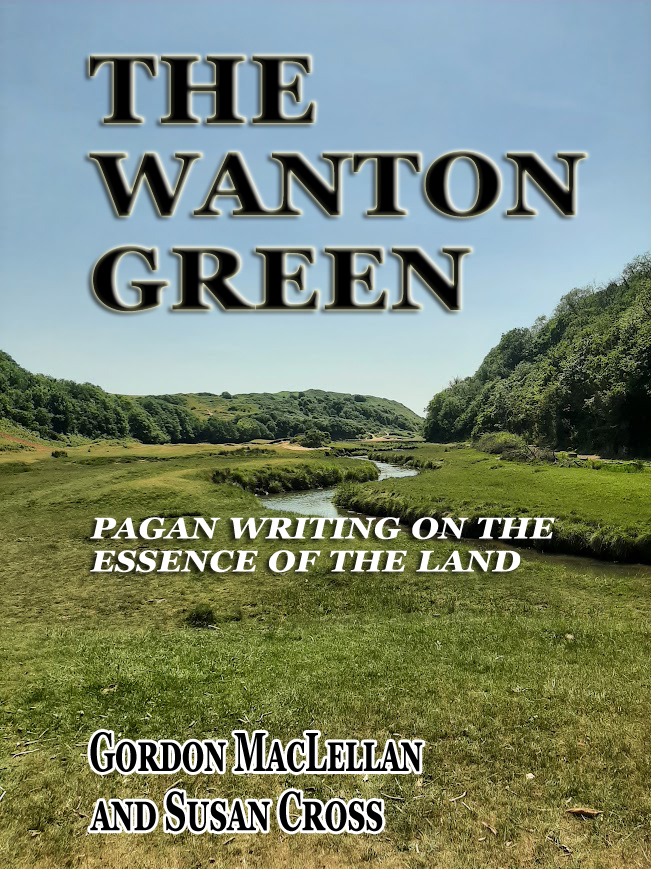
The Wanton Green
Edited by Gordon MacLellan & Susan Cross
Format: Softcover
ISBN:
£14.99 / US$23.00
Subjects: Contemporary Pagan Writings/Paganism/Spirituality.
Click Here for The Wanton Geen / USA
Click Here for The Wanton Green / UK
As our relationship with the world unravels and needs to take a new form, The Wanton Green presents a collection of inspiring, provoking and engaging essays by modern pagans about their own deep, passionate and wanton relationships with the Earth.
“Where do we locate the sacred? In a place, a meeting, memory, a momentary glimpse? The Wanton Green provides no easy answers and instead, offers a multitude of perspectives on how our relationships with the earth, the sacred, the world through which we move are forged and remade.” – Phil Hine.
About the editors:
Gordon MacLennan is a shaman, storyteller and artist whose work sets out to find ways of celebrating the relationships between people, place and wildlife. Gordon’s books include Talking to the Earth, Sacred Animals and Celebrating Nature (all with Capall Bann), StarMatter and the Piatkus Guide to Shamanism.
Susan Cross is a poet, heritage and environmental interpretation consultant and occasional pirate. About a decade ago she realised that she has probably always been some kind of animist mystic and since then has endeavoured to make that a more conscious, clearer and brighter part of her life.
The Wanton Green: Contemporary Pagan Writings On Place. Edited by Gordon MacLellan and Susan Cross (Mandrake). Since the 1970s modern forms of pagan witchcraft (Wicca) and the neo-pagan movement have defined themselves by an engagement and involvement with ecology, the environment and ‘green’ politics with their adherents claiming to be following a ‘nature religion’. This is a collection of essays on the genii loci, or ‘spirit of place’ in the natural world written by various Wiccans and neo-pagans including Shani Oates, Rufus Harrington, Emma Restall-Orr, Melissa Montgomery, Jan Fries, Julian Vayne, Barry Montgomery, Barry Paterson, Susan Greenwood, Mogg Morgan and others. The contents range from an experience of the faery folk in Devon to a psychogeographical guide to ‘occult London’. If you are interested in the non-traditional neo-pagan approach to nature and the environment then this book is recommended. – The Cauldron #144, May 2012.
